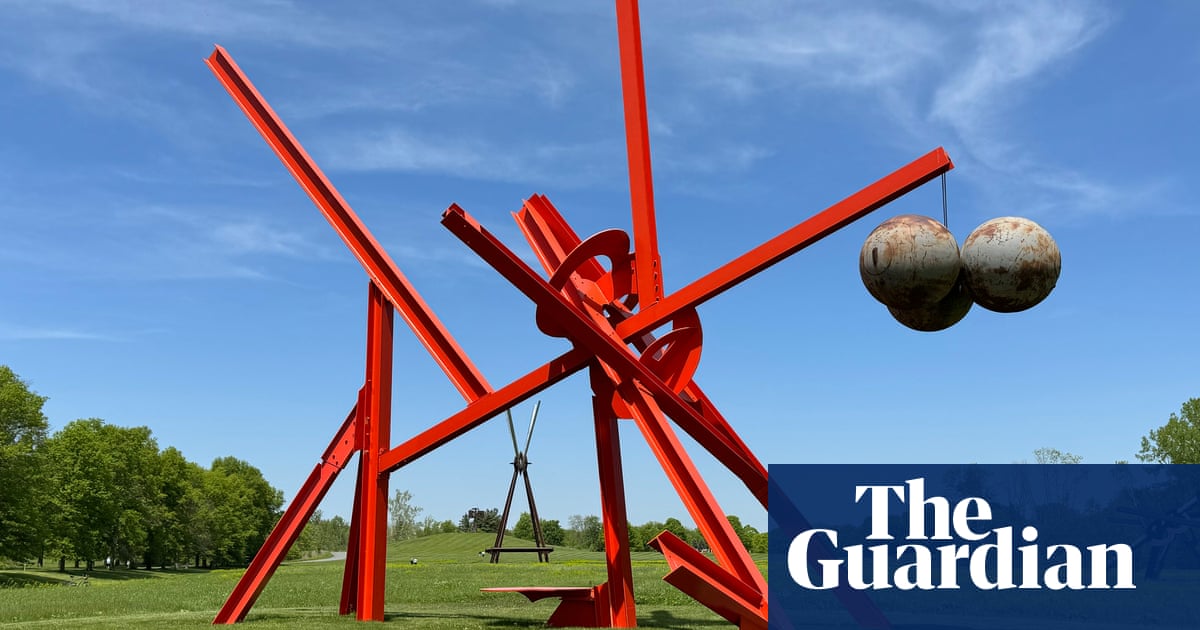Can art reshape our relationship with nature? Storm King Art Center’s recent expansion, a $53 million reimagining of its landscape, is doing just that, offering a compelling glimpse into the future of art and landscape.Discover how this innovative project prioritizes sustainability and visitor experience, setting new standards for cultural institutions and sparking vital conversations about the future of art and landscape design.
The Future of Art and Landscape: How Storm King Art Center is Redefining the Visitor Experience
Table of Contents
- The Future of Art and Landscape: How Storm King Art Center is Redefining the Visitor Experience
- Prioritizing the Landscape: A Shift Away from Asphalt
- Sustainable Design: Climate resilience and Environmental Stewardship
- Enhanced Amenities: Elevating the Everyday Experience
- Behind-the-Scenes improvements: Supporting the Art and the Artists
- The Future is Open: Embracing Versatility and Innovation
The Storm King Art Center, a sprawling outdoor sculpture park in New YorkS Hudson Valley, has always been a haven for art lovers. But its recent $53 million expansion isn’t just about adding more sculptures; it’s about reimagining the entire visitor experience. This transformation offers a glimpse into the future of how we interact with art and the landscapes that surround it. Let’s explore the key trends emerging from this innovative project.
Prioritizing the Landscape: A Shift Away from Asphalt
One of the most striking changes at Storm King is the deliberate move away from excessive asphalt. The architects, WXY Studio, along with landscape practices like Reed Hilderbrand and Gustafson Porter + Bowman, have removed over two hectares of parking lots and access roads. This isn’t just about aesthetics; it’s about prioritizing the natural environment and the art itself. By reclaiming the landscape, the sculptures are allowed too truly shine, and visitors can immerse themselves in the art without the distraction of cars and concrete.
Pro Tip: Consider how your own spaces can be enhanced by integrating nature. Even small changes, like adding green walls or rooftop gardens, can considerably improve the visitor experience.
Sustainable Design: Climate resilience and Environmental Stewardship
Storm King’s expansion incorporates sustainable design principles, reflecting a growing trend in the art world and beyond. The project includes planting over 650 trees and shrubs, restoring a previously culverted stream, and selecting plant species for climate resilience. This proactive approach demonstrates a commitment to environmental stewardship and prepares the park for the challenges of a changing climate.
Did you know? The use of native plants and sustainable materials is becoming increasingly crucial in landscape design,reducing environmental impact and promoting biodiversity.
Enhanced Amenities: Elevating the Everyday Experience
the new restroom pavilion at Storm King is a prime example of how thoughtful design can elevate the visitor experience. The elegant wooden structure, with its open-air sinks and connection to the surrounding woodland, transforms a mundane necessity into a moment of tranquility. This focus on amenities, from the new ticket office to the outdoor lobby with phone charging points, reflects a broader trend of creating comfortable and convenient spaces for visitors.
Case Study: The High Line in New York City is a great example of how public spaces can be transformed into engaging experiences. The park’s design incorporates seating areas, public art, and unique landscaping, making it a popular destination for locals and tourists alike.
Behind-the-Scenes improvements: Supporting the Art and the Artists
The expansion also includes notable behind-the-scenes improvements, such as a new logistics entrance and a conservation, fabrication, and maintenance building. These additions streamline operations, reduce environmental impact, and provide artists with the resources they need to create and maintain their work. This focus on supporting the art ecosystem is crucial for the long-term success of any cultural institution.
The Future is Open: Embracing Versatility and Innovation
Storm King’s new spaces, like the reclaimed Tippet’s Field, are designed to be flexible and adaptable.These areas are intended to host temporary installations and performances, allowing the park to evolve and respond to the changing needs of artists and audiences. This embrace of innovation and experimentation is a key characteristic of successful cultural institutions.
Reader Question: How can art institutions better integrate technology to enhance the visitor experience?
The Storm King Art Center’s transformation offers valuable lessons for the future of art and landscape design. By prioritizing the environment, enhancing amenities, and embracing innovation, cultural institutions can create more engaging, sustainable, and inspiring spaces for visitors. The future of art is not just about the art itself; it’s about the entire experience.
Ready to explore more innovative design trends? Check out our other articles on sustainable architecture and public art installations. Subscribe to our newsletter for the latest updates and insights!

